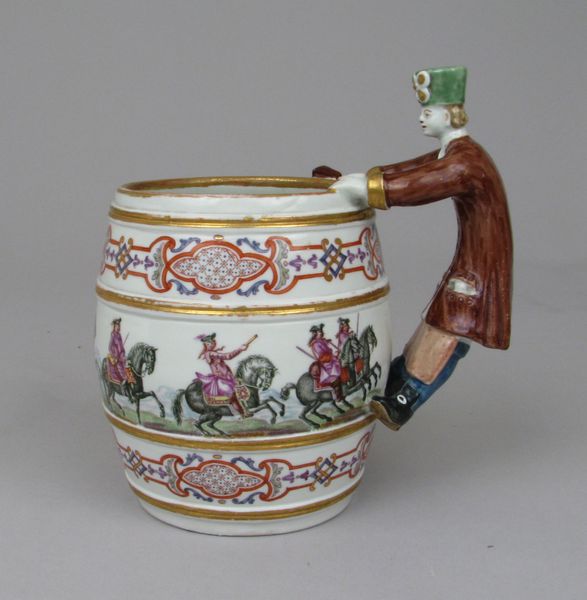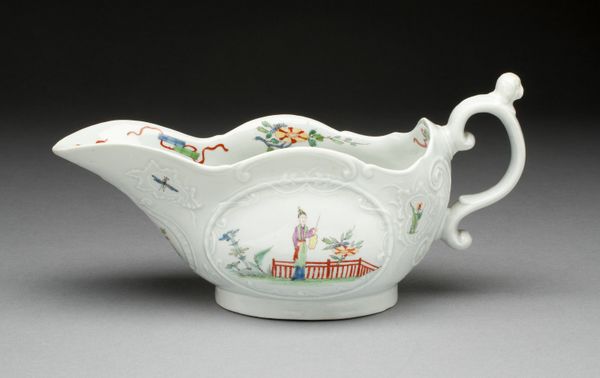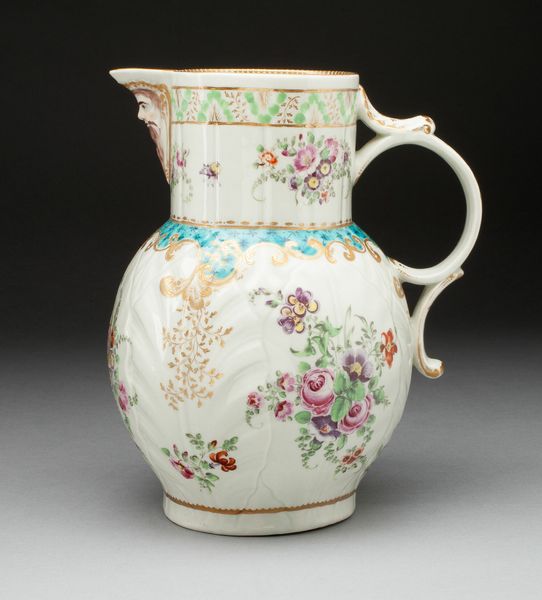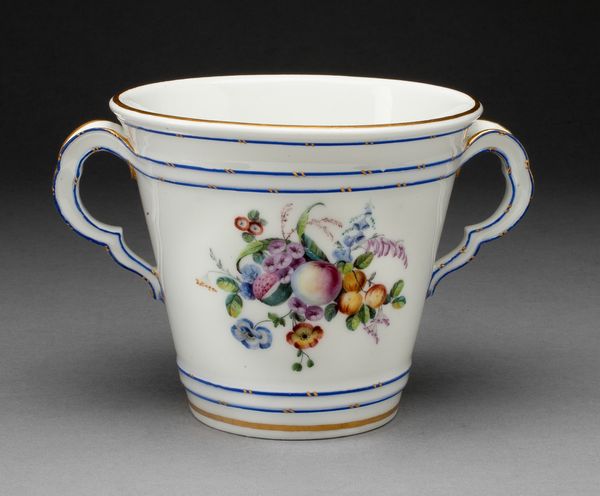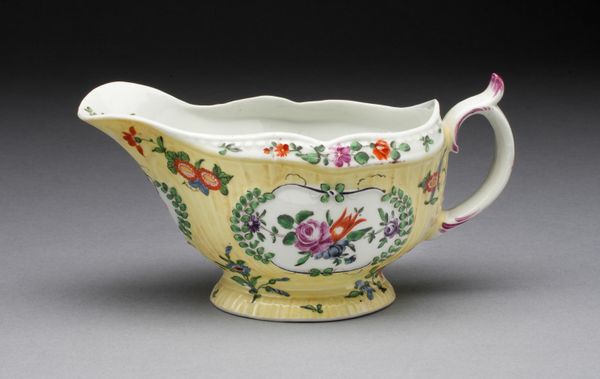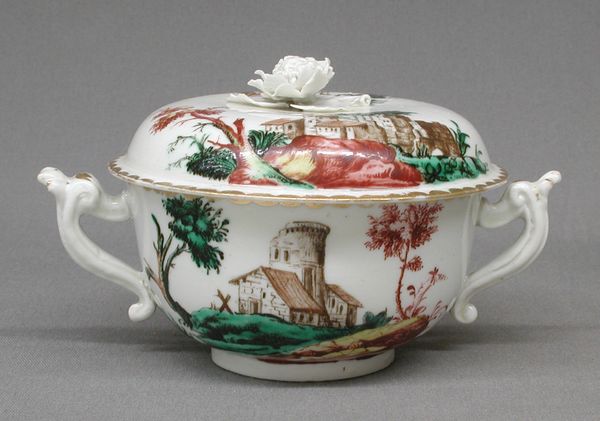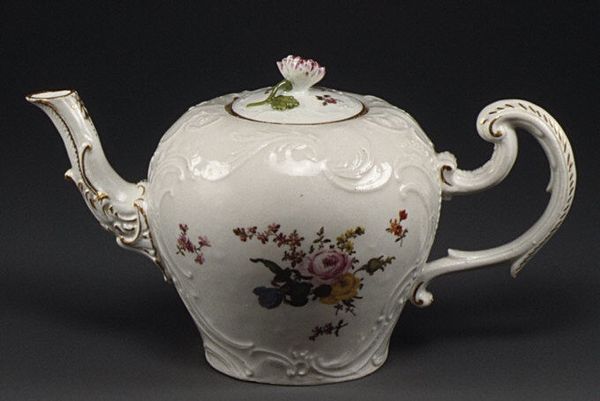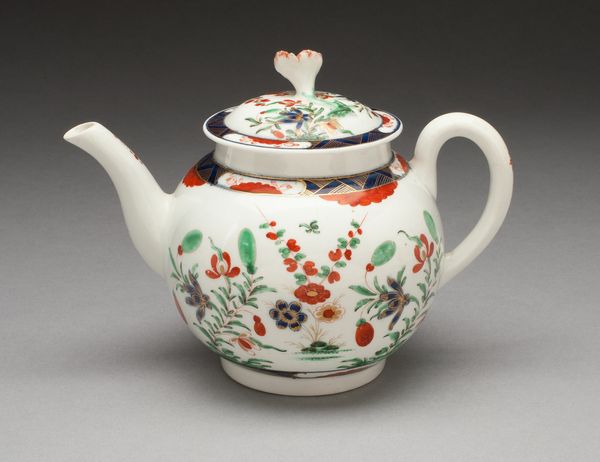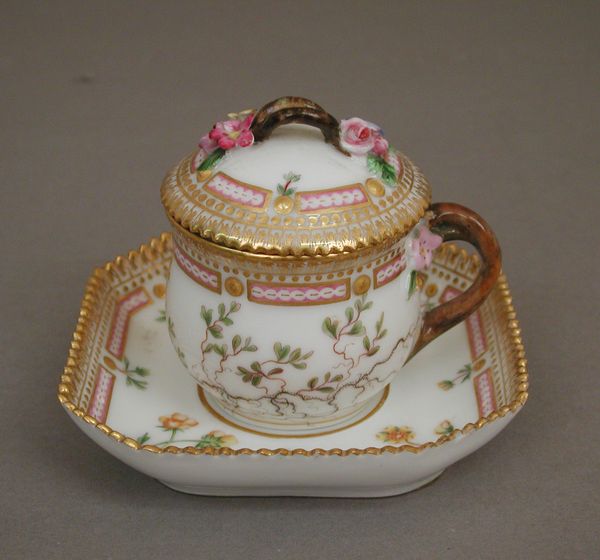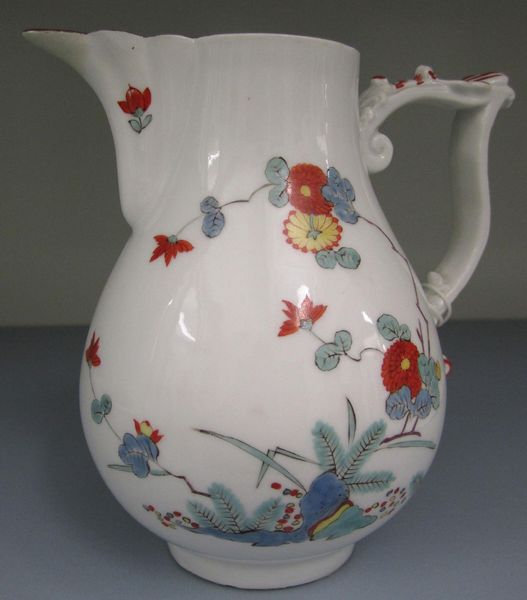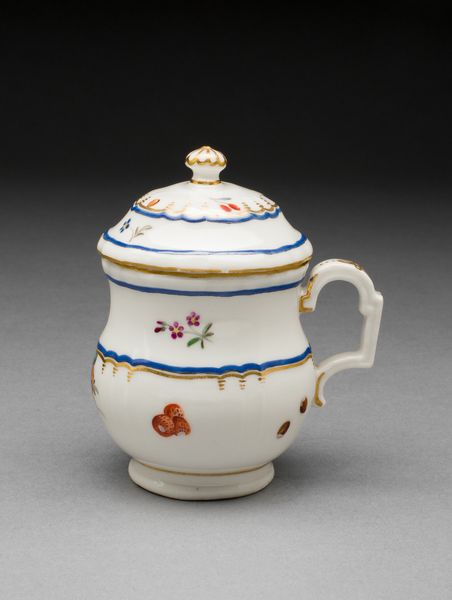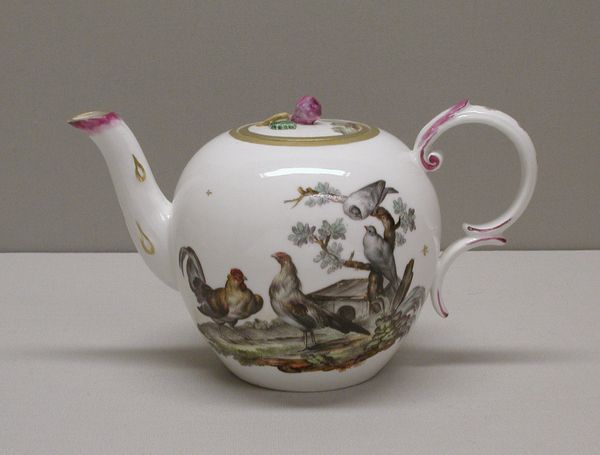
tempera, print, ceramic, porcelain, sculpture
#
decorative element
#
tempera
#
pottery
# print
#
asian-art
#
landscape
#
ceramic
#
flower
#
porcelain
#
sculpture
#
ceramic
#
decorative-art
#
miniature
#
rococo
Dimensions: Height: 4 1/4 in. (10.8 cm)
Copyright: Public Domain
Editor: This object is called "Mug", dating from 1720 to 1730. It is currently held at the Metropolitan Museum of Art. It is made from porcelain with tempera and print applied. It strikes me as unusually ornamental for something so utilitarian. How would you interpret this object? Curator: Focusing on the Mug's materiality reveals quite a lot. Porcelain itself, by the 18th century, was tied to global trade routes. Note how its very form mimics barrel-making traditions of wooden cooperage, yet the expensive materials speak to elite consumption. Editor: So it's imitating a working-class object, but made with luxury goods? Curator: Precisely. The decorative schema – with Asian-inspired landscapes and rococo handle – is equally relevant. The handle itself even depicts a classical face. Porcelain production in Europe relied heavily on imitating Asian designs at the time. These scenes also denote status, and suggest an engagement with exoticism. What kind of labor was involved in its production? Editor: I imagine very specialized labour and artisanal techniques were required, dividing labour across skilled craftsmen... and probably child laborers as well. Curator: Exactly. Now, considering that, and how everyday objects were starting to feature fine art and decorative techniques... how might that speak to class divisions? Editor: It highlights the class divide: the wealthy could afford such embellishments on common items while the lower classes had plain, functional wares, which informs our understanding of consumption in the 18th century. It's not just a pretty mug, but a reflection of a whole system. Curator: Absolutely. Everyday items tell rich stories about labour, global trade and material culture, as evidenced in the intricate decorations and the status conveyed by them. Editor: Thinking about it that way certainly enriches the Mug beyond its pretty surface.
Comments
No comments
Be the first to comment and join the conversation on the ultimate creative platform.
